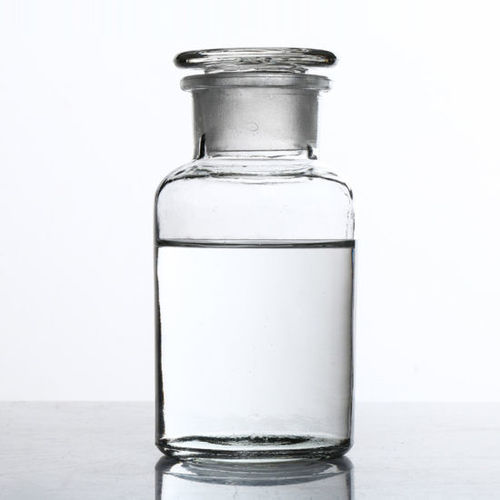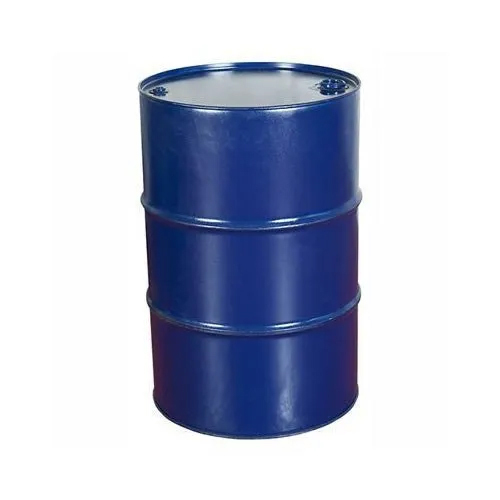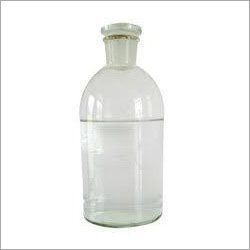Welcome to Our Company
Dimethyl Formamide
Product Details:
- Molecular Weight 73.09 GSM (gm/2)
- Shelf Life 12 Months
- Purity 99%
- Physical Form Liquid
- CAS No 68-12-2
- Storage Room Temperature
- Application Industrial
- Click to View more
X
Dimethyl Formamide Price And Quantity
- 1 Kilograms
Dimethyl Formamide Product Specifications
- Industrial
- Room Temperature
- 68-12-2
- Liquid
- 99%
- 12 Months
- 73.09 GSM (gm/2)
- 200-679-5
- Technical Grade
- 944 Kilogram per cubic meter (kg/m3)
- (CH3)2NC(O)H
- -61 C
Product Description
Liquid based Dimethyl Formamide is used to produce polymer and acrylic fiber. As an effective solvent, this chemical is used to formulate peptide coupling in pharmaceutical industry. This chemical is also required to produce pesticides, synthetic leather and surface coating agent. It has faint unpleasant smell. Its exposure to human body can damage liver, lungs, skin, heart and eyes. Necessary precaution needs to be taken during its handling. Standard of this chemical has been checked on the basis of its storage life, composition, application scope and toxin level.
Uses of Dimethyl Formamide:
Dimethylformamide (DMF) is a versatile organic solvent with various applications in different industries. Its chemical formula is (CH3)2NC(O)H. Due to its unique properties, it finds use in the following areas:
1. Chemical Reactions: DMF serves as a solvent for a wide range of chemical reactions. It dissolves a variety of organic and inorganic compounds, making it valuable in the synthesis of pharmaceuticals, agrochemicals, dyes, and other specialty chemicals.
2. Polymer Industry: DMF is an essential component in the production of various polymers and resins, including polyurethane, polyacrylonitrile, and polyvinyl chloride. It acts as a reaction medium, enhancing the solubility of reactants and assisting in polymerization processes.
3. Fiber Spinning: In the textile industry, DMF plays a crucial role in spinning fibers like polyacrylonitrile, which are used in the production of acrylic fibers and other synthetic textiles.
4. Pharmaceutical Manufacturing: DMF is a common solvent used in pharmaceutical processes. It aids in dissolving and processing active pharmaceutical ingredients (APIs) during drug formulation.
5. Electrochemical Applications: DMF is employed as an electrolyte solvent in certain electrochemical processes, particularly in lithium-ion battery manufacturing.
6. Residue Analysis: In analytical chemistry, DMF can be used as a solvent for extracting and analyzing trace residues of various substances from complex matrices.
7. Peptide Synthesis: DMF is frequently used as a solvent in peptide synthesis and purification processes.
8. Gas Separation: DMF is utilized in gas separation techniques, particularly for removing hydrogen sulfide and carbon dioxide from natural gas and other industrial gas streams.
9. Solvent in Organic Reactions: DMF's ability to dissolve a wide range of organic compounds makes it useful as a solvent in organic chemistry laboratories.
Dimethyl Formamide Properties:
Dimethylformamide (DMF) is an organic compound with the chemical formula (CH3)2NC(O)H. It is a clear, colorless, and high-boiling liquid with several notable properties, making it useful in various industrial applications and as a solvent. Here are some key properties of dimethylformamide:
1. Physical State: Dimethylformamide is a liquid at room temperature. It is hygroscopic, meaning it readily absorbs water from the atmosphere.
2. Boiling Point: The boiling point of DMF is relatively high compared to many common solvents, at around 153 degree centigrade. This high boiling point allows it to be used in processes that require elevated temperatures.
3. Melting Point: The melting point of DMF is around -61 degree centigrade.
4. Solubility: DMF is highly soluble in water and a wide range of organic solvents, including polar and nonpolar compounds. Its ability to dissolve a variety of substances makes it a versatile solvent in different applications.
5. Density: The density of DMF is around 0.944 g/cm3 at 20 degree centigrade.
6. Vapor Pressure: The vapor pressure of DMF is relatively low at room temperature, contributing to its stability as a liquid.
7. Toxicity: Dimethylformamide is considered a hazardous chemical and should be handled with care. It can be absorbed through the skin, and exposure to high concentrations can cause health issues. Safety measures and proper protective equipment should be used when working with DMF.
8. Chemical Properties: DMF is a polar solvent with a high dielectric constant, which means it has a strong capability to dissolve polar compounds and salts. It can be used as a reaction medium in various chemical processes, such as in the synthesis of pharmaceuticals, pesticides, and other organic compounds.
FAQ:
Q. What is Dimethyl Formamide (DMF)?
Ans: Dimethyl Formamide (DMF) is an organic compound with the chemical formula (CH3)2NC(O)H. It is a clear, colorless, and high-boiling liquid that serves as a versatile solvent in various industrial applications and chemical processes.
Q. What are the main uses of DMF?
Ans: DMF is primarily used as a solvent in the production of synthetic fibers like polyurethane and polyacrylonitrile. It is also employed in the manufacturing of plastics, films, and coatings. Additionally, DMF is used as a reaction medium in the pharmaceutical industry for the synthesis of pharmaceuticals and other organic compounds.
Q. Is DMF hazardous to health?
Ans: Yes, DMF is considered hazardous to health. It can be absorbed through the skin, and exposure to high concentrations can cause health issues. Therefore, it should be handled with care, and proper safety measures and protective equipment should be used when working with DMF.
Q. What precautions should be taken when using DMF?
Ans: When using DMF, it is essential to follow safety guidelines and regulatory requirements. Proper protective equipment, such as gloves and goggles, should be worn to prevent skin and eye contact. Adequate ventilation is necessary to avoid the inhalation of vapors. Additionally, work with DMF should be conducted in a well-ventilated area or under a fume hood.
Q. Can DMF be mixed with water?
Ans: Yes, DMF is highly soluble in water. It is a polar solvent with a high dielectric constant, which means it can dissolve polar compounds and salts effectively.
Q. What is the boiling point of DMF?
Ans: The boiling point of DMF is around 153 degree centigrade. Its high boiling point makes it suitable for processes that require elevated temperatures.
Q. Is DMF flammable?
Ans: DMF is not highly flammable. Its flash point is about 57 degree centigrade, which means it can ignite when exposed to an open flame or high heat.
Q. Can DMF be used in food or beverage applications?
Ans: No, DMF is not safe for use in food or beverage applications. It is an industrial chemical and should only be used in appropriate industrial settings and processes.
Q. Is DMF biodegradable?
Ans: DMF is not readily biodegradable, which means it can persist in the environment for a relatively long time if released.
Q. What should I do in case of accidental exposure to DMF?
Ans: In case of accidental exposure to DMF, immediately remove contaminated clothing and wash the affected area with plenty of water. If you experience any adverse effects, seek medical attention promptly.
Tell us about your requirement

Price:
Quantity
Select Unit
- 50
- 100
- 200
- 250
- 500
- 1000+
Additional detail
Mobile number
Email









